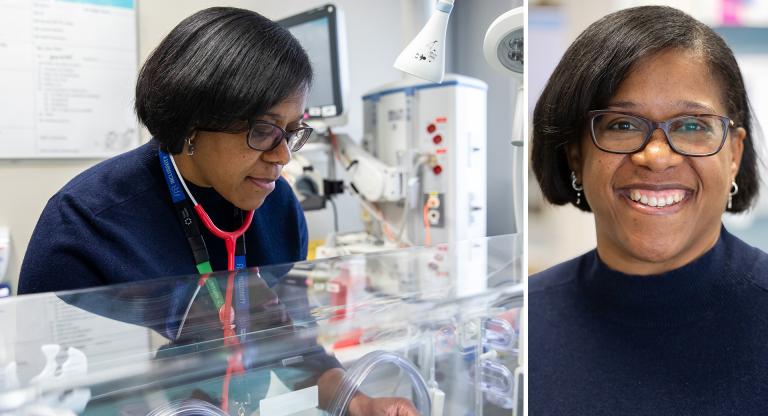Protected Code Blue: Ready to go

A common misconception during the COVID-19 pandemic is that a hospital emergency department is a place to avoid. That is far from the truth.
The Emergency Department at Mount Sinai Hospital is full of life. There are several nurses, doctors and other clinicians attending to patients, filling out paperwork, and gathering in huddles to discuss work. The sounds of medical equipment beeping join a chorus of fingers running across keyboards and whispers of co-workers socializing.
But then, over the intercom comes the call. “Protected Code Blue.”
A Code Blue alerts all staff to a medical emergency such as cardiac arrest. Now, all critical patient arrests are “Protected Code Blues” where the care team meticulously don and doff their Personal Protective Equipment (PPE) in controlled areas, to mitigate risk to themselves, their colleagues and their patients.
Within moments clinical staff respond. They organize themselves outside of the patient’s Emergency Department room and prepare to enter. There is composure, role identification, team communication and due diligence throughout this rapid process. “The idea is to stay calm and safe, we are practicing and getting better every time,” said Kelly Shillington, nurse and Emergency Department Program Champion, Operational Readiness at Mount Sinai.
Although everyone moves quickly during the Protected Code Blue, they understand their purpose. This is just one of the several Protected Code Blue simulations the Emergency Department holds every week.
Now more than ever, these simulations are important as the Emergency Department has transitioned from pre-COVID-19 to one where the virus is on top of mind.
“Like Elvis said, only fools rush in,” said Kelly. “We have to protect ourselves first.”
Easing the teams’ anxieties over contracting COVID-19 is of greatest concern and a priority for the Emergency Department leadership team. “The more practice we have, the better we are,” said Kelly. “Building this muscle memory helps alleviate the rapid response anxiety we may have.”
Performing these simulations allows the team to identify any mistakes that might occur during a session. They help the team build a robust strategy to limit risks to anyone in the department, learn where to make improvements and address them straight away. After every simulation the team holds a debriefing session where anyone on the care team can share some new found knowledge with their colleagues, a safe learning environment for the front-line pandemic response.












